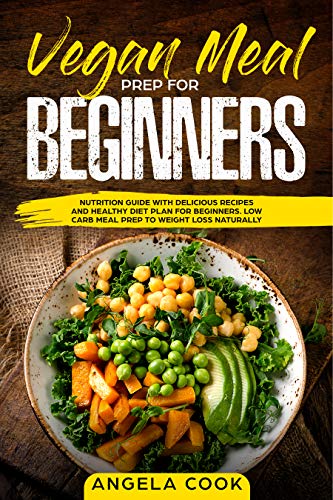
Beans are usually used in soups and casseroles. However, sometimes they can be made into sauces that can be used to create a meal. These sauces are available hot or cold. Many home cooks don’t have time to prepare beans from scratch. Therefore, they usually turn to canned beans or beans that are pre-prepared. These are a great option for a quick weeknight meal. They can be topped using cheese, cream, or avocado. The result is both healthy and delicious.
There are a few steps that you can follow to make simple beans sauce. Pre-soak beans in two inches of water. Cook them until softened. They will take longer to cook if the beans are still very hard. This will depend on the age of the beans.
When you are cooking beans, make sure to stir them often. To enhance the beans' flavor, you can also add fresh herbs. The herbs can be added right before serving. Make a vegetarian version of this dish by substituting vegetable stock for meat. This sauce can keep for up one month.

A small saucepan and some vegetable oil are needed to make the sauce. The microwave is also an option, but you should cook the beans for at least two minutes. Also, rinse canned beans after draining them. The sauce can also be made with liquid smoke, but this should only happen after 2 minutes.
Generally, there are two types of bean sauces: the crushed bean sauce and the ground bean sauce. Both have a salty and savory flavor. Crushed beans are more salty than whole beans. Whole beans are often left unsweetened.
To make the sauce more flavorful, you can add additional spices to the crushed beans sauce. To make your beans spicy, you could add fresh red chili to the sauce. Garlic can be added to the sauce to temper its saltiness. The ground bean sauce can be used to add spices like cumin or coriander. You can also add some parsley to the pan before serving. You can also make this sauce with vegetable broth.
If you are making a vegetarian version of the dish, you should increase the olive oil and skip the bacon. You should also add spinach to the sauce. These vegetables can be boiled for a few extra minutes.

Can-can beans are not available in cans. You can make the beans yourself and cook them until they become soft. If you intend to use the beans as part of your meal, you may add them to the vegetables or meat. You can freeze leftovers to enjoy in another dish later. It takes less than 45 minutes to make a delicious dinner.
You can also make your very own black bean soup using chicken broth and vegetable soup. For a savory taste, you can add orange zest, fresh garlic, and other spices.
FAQ
Take herbs and other supplements to improve your immunity
It is possible to boost immune function by using herbs and natural remedies. Examples include ginger, garlic and oregano, echinacea, vitamin C, ginkgo Biloba, and echinacea.
These herbal remedies shouldn't be used to replace traditional medical treatment. Side effects include nausea, dizziness and stomach cramps.
How can I get enough vitamins
Most of your daily vitamin requirements can be met by diet alone. Supplements can be beneficial if you are missing a specific vitamin. A multivitamin supplement can provide all the vitamins you require. You can also buy individual vitamins in your local drugstore.
Talk to your doctor to find out which foods are rich in vitamins. Some examples of rich sources of vitamins E and K include dark green leafy vegetables, such as spinach.
Ask your doctor if there is any doubt about how much vitamin you should be taking. He or she will recommend the appropriate dosage based on your medical history and current health status.
How can I live a life that is full of joy every day?
To live a happy life, the first step is to discover what makes you happy. You can then work backwards once you have identified your happiness. You can also ask other people how they live their best lives every day.
You might also enjoy books like "How to Live Your Best Life", by Dr. Wayne Dyer. He talks about finding happiness in all areas of your life and finding fulfillment.
Statistics
- Extra virgin olive oil may benefit heart health, as people who consume it have a lower risk for dying from heart attacks and strokes according to some evidence (57Trusted Source (healthline.com)
- WHO recommends consuming less than 5% of total energy intake for additional health benefits. (who.int)
- The Dietary Guidelines for Americans recommend keeping added sugar intake below 10% of your daily calorie intake, while the World Health Organization recommends slashing added sugars to 5% or less of your daily calories for optimal health (59Trusted (healthline.com)
- According to the Physical Activity Guidelines for Americans, we should strive for at least 150 minutes of moderate intensity activity each week (54Trusted Source Smoking, harmful use of drugs, and alcohol abuse can all seriously negatively affect your health. (healthline.com)
External Links
How To
What does the meaning of "vitamin?"
Vitamins are organic compounds found naturally in food. Vitamins help us absorb nutrients from foods we eat. Vitamins cannot come from the body so food must provide them.
There are two types: water-soluble and fat-soluble vitamins. Water soluble vitamins dissolve easily in water. Vitamin C,B1(thiamine), B2 (2riboflavin), and B3 (3niacin), as well as vitamin C,B1, B2 (riboflavin), and B3 (niacin), vitamin B6 (pyridoxine), vitamin folic acid (biotin), pantothenic, and choline are examples. The liver and fatty tissue are the main storage places for fat-soluble vitamins. These include vitamin D, E and K, as well as beta carotene.
Vitamins are classified according their biological activity. There are eight major types of vitamins.
-
A – Essential for normal growth, and the maintenance of good health.
-
C – essential for proper nerve function.
-
D - essential for healthy teeth and bones.
-
E is needed for good reproduction and vision.
-
K - essential for healthy nerves, muscles, and joints.
-
P - vital for building strong bones andteeth.
-
Q - aids digestion and absorption of iron.
-
R - Red blood cells are made from red blood cells.
The recommended daily allowance (RDA) of vitamins varies depending on age, gender, and physical condition. The U.S. Food and Drug Administration, (FDA), sets the RDA value.
For adults over 19 years, the RDA is 400 mg per day for vitamin A. For fetal development, pregnant women require 600 micrograms per daily. Children ages 1-8 require 900 micrograms per day. Children under 1 year old require 700 micrograms daily, while infants over one year old need 500 micrograms every day. This decreases between 9 and 12 months.
Children ages 1-18years who are obese need 800 micrograms per day while those who are overweight need 1000 micrograms per day and children who are underweight need 1200 micrograms per day to meet their nutritional needs.
Children aged 4-8 who have anemia are required to consume 2200 micrograms of Vitamin C daily.
2000 micrograms is the minimum daily intake for general health in adults older than 50 years. Because of their higher nutrient needs, women who are pregnant or nursing need 3000 mg per day.
1500 micrograms is the recommended daily intake for adults aged 70+, as they lose 10% of their muscle every ten years.
Women who are pregnant, nursing or breastfeeding need more than the RDA. Pregnant women need 4000 micrograms per dayduring pregnancy and 2500 micrograms per day after delivery. Breastfeeding mothers need 5000 micrograms per day when breast milk is being produced.